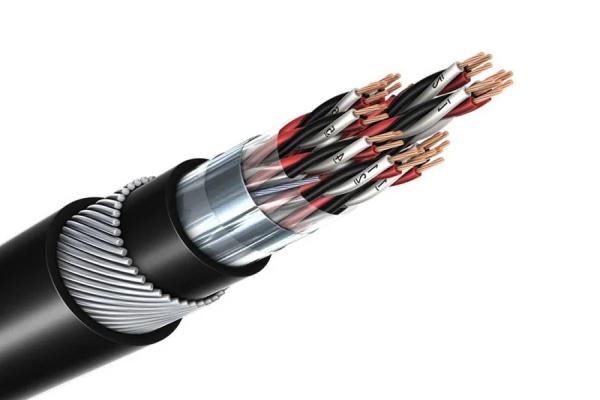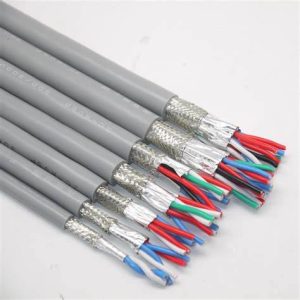

In the complex and demanding world of industrial processes, reliable connectivity is paramount. Instrumentation cables play a crucial role in ensuring seamless communication between various instruments, sensors, and control systems within industrial environments. These cables are specifically designed to transmit signals accurately and efficiently, even in harsh conditions. V tomto článku, we will delve into the intricacies of instrumentation cables, exploring their types, applications, and importance in modern industrial setups.


Instrumentation cables are a specialized type of cable used for transmitting low-energy electrical signals from sensors or transmitters to control equipment or monitoring devices. Unlike power cables, which are designed to carry high levels of electrical current, instrumentation cables handle low-voltage signals with precision and reliability.
These cables typically consist of multiple conductors, usually twisted together in pairs or triads, to minimize electromagnetic interference (EMI) and ensure signal integrity. The conductors are often insulated and shielded to protect against external interference and to maintain signal clarity over long distances. Okrem toho, they may feature various armor and jacketing options to provide mechanical protection and resistance to environmental factors such as moisture, chemikálie, and extreme temperatures.
Instrumentation cables come in several types, each tailored to specific applications and environments. Some common types include:
These cables contain multiple twisted pairs of conductors, each individually insulated and color-coded for easy identification. Multipair cables are versatile and commonly used in industrial automation, process control, and communication systems.
Triad cables consist of three individually insulated conductors twisted together. They are particularly suitable for applications where accurate signal transmission and noise immunity are critical, such as in temperature measurement and control loops.
Armored instrumentation cables feature an additional layer of protective armor, typically made of steel or aluminum, to safeguard against mechanical damage and rodent attacks. They are ideal for use in rugged environments such as industrial plants, refineries, and offshore installations.
These cables are designed to maintain circuit integrity and functionality even in the event of a fire. They are constructed using special insulation and jacketing materials that offer high temperature resistance and low smoke emission, ensuring continued operation during emergency situations.
Composite instrumentation cables combine multiple functionalities into a single cable structure, such as incorporating power conductors alongside signal conductors. This streamlines installation and reduces cable clutter, making them suitable for space-constrained environments.
Instrumentation cables find extensive use across a wide range of industries and applications, počítajúc do toho:
In manufacturing plants and industrial facilities, instrumentation cables facilitate communication between sensors, actuators, programmable logic controllers (PLCs), and supervisory control and data acquisition (SCADA) systems. They enable real-time monitoring and control of production processes, ensuring optimal efficiency and productivity.
In the oil and gas sector, instrumentation cables are deployed in drilling rigs, pipelines, and petrochemical plants to transmit data from sensors measuring parameters such as pressure, temperature, and flow rates. These cables withstand harsh environmental conditions and hazardous atmospheres, providing reliable performance in demanding offshore and onshore installations.
Instrumentation cables play a vital role in power generation facilities, including thermal power plants, hydroelectric dams, and renewable energy installations. They facilitate the monitoring and control of equipment such as turbines, generators, and switchgear, helping operators maintain safe and efficient operation.
In transportation systems such as railways, letiská, and seaports, instrumentation cables are used for signal transmission in control and monitoring applications. They enable the seamless operation of signaling systems, traffic lights, and surveillance cameras, enhancing safety and efficiency in transportation networks.
Within commercial buildings and infrastructure projects, instrumentation cables support building automation systems for HVAC (heating, ventilation, and air conditioning), lighting control, access control, and security systems. They enable centralized monitoring and management of building functions, optimizing energy usage and occupant comfort.
Given their critical role in industrial operations, the quality and reliability of instrument cables are of utmost importance. Poor-quality cables can lead to signal distortion, data loss, and system failures, resulting in costly downtime and safety hazards. Preto, it is essential to source cables from reputable manufacturers who adhere to stringent quality standards and employ robust manufacturing processes.
Okrem toho, proper installation and maintenance are crucial to ensuring the optimal performance and longevity of instrumentation cables. Installers must follow industry best practices and guidelines to minimize signal interference, avoid cable damage, and maintain electrical continuity. Regular inspections and testing help identify potential issues early on, allowing for timely repairs or replacements as needed.
Ako sa technológia neustále vyvíja, instrumentation cables are also subject to ongoing advancements and innovations. Some emerging trends in the field include:
With the rise of Industry 4.0 and the Internet of Things (IoT), instrumentation cables are becoming increasingly integrated with digital communication protocols and networked systems. This enables real-time data collection, analysis, and remote monitoring, enhancing predictive maintenance and operational efficiency.
Manufacturers are developing instrumentation cables with improved durability and resilience to withstand harsh environmental conditions, including extreme temperatures, chemical exposure, a mechanické napätie. Advanced materials and construction techniques contribute to longer service life and reduced maintenance requirements.
Smart instrumentation cables equipped with built-in sensors and diagnostic capabilities offer enhanced functionality for condition monitoring and fault detection. These cables can detect changes in temperature, humidity, and vibration, providing early warning signs of potential issues and optimizing asset management strategies.
There is growing emphasis on sustainability and environmental responsibility in cable manufacturing, driving the adoption of eco-friendly materials and manufacturing processes. Recyclable materials, low-emission compounds, and energy-efficient production methods contribute to reducing the environmental footprint of instrumentation cables.
In conclusion, instrumentation cables play a vital role in ensuring seamless connectivity and data transmission in industrial environments. From manufacturing plants to oil rigs and transportation systems, these cables form the backbone of modern infrastructure, enabling efficient control, monitorovanie, and automation. As technology advances and industry demands evolve, the continued development of high-quality, reliable instrumentation cables will remain essential for powering the connected industries of the future.
When people hear the term mineral insulated cable, many immediately think of harsh environments like…
Ako telekomunikačné siete a systémy prenosu energie rýchlo rastú, the demand for reliable and cost-effective…
Vo veľkých projektoch ropy a plynu, Priemyselné káble nie sú len príslušenstvo—they are the "nervous…
Vo svete elektrických spojení, káblové plody—tiež známe ako káblové uši alebo káblové svorky—are…
Pri výbere pravého gumového kábla pre projekt elektrotechniky, it is critical to…
Vážení partneri a zákazníci: 29. januára, 2025 je čínsky lunárny nový rok – Spring…